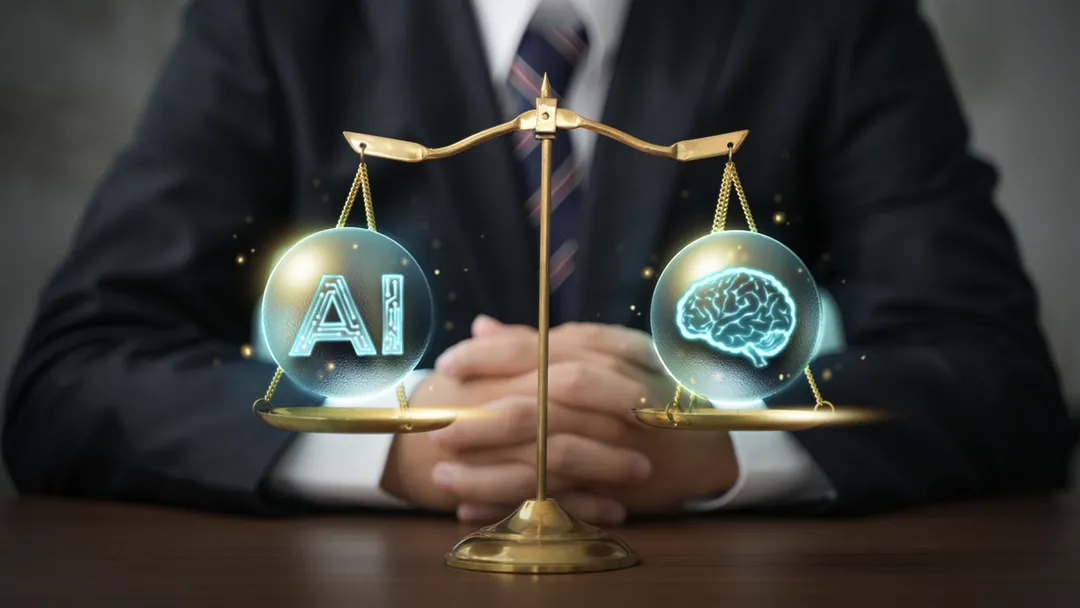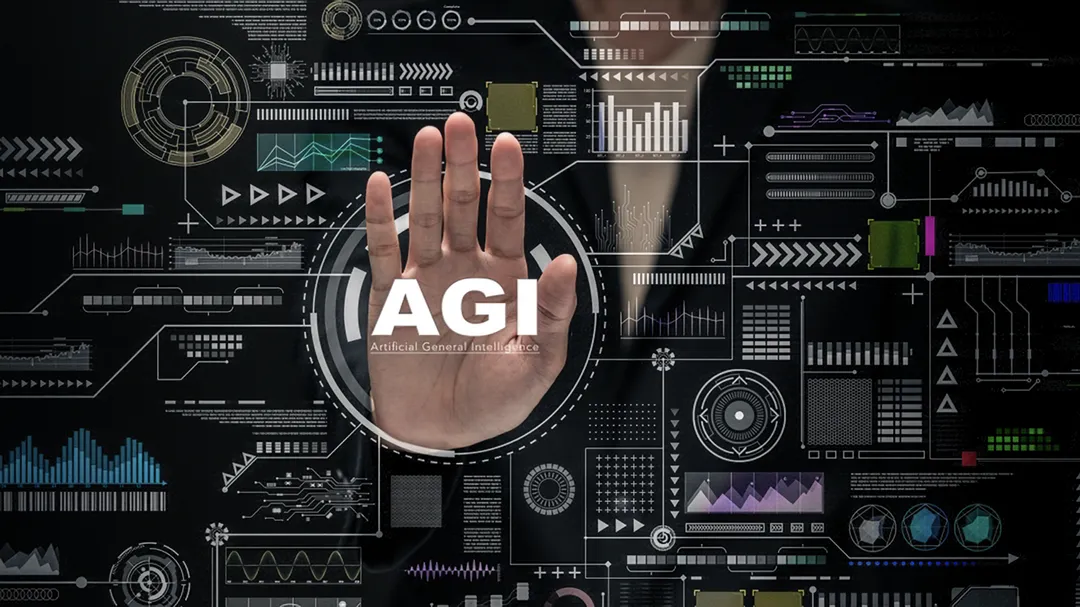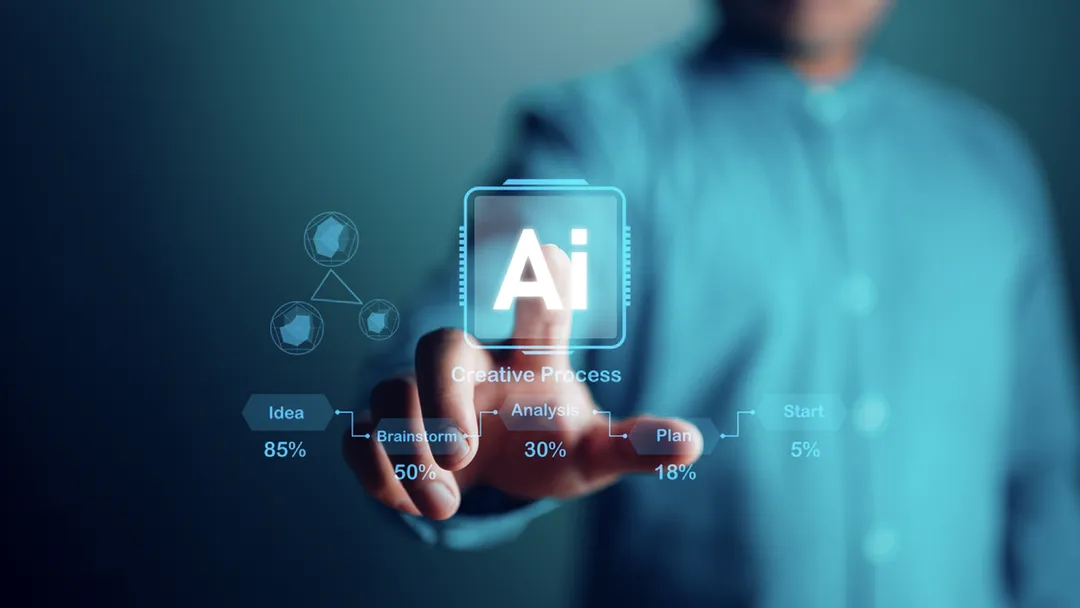Understanding the Basics of Artificial Intelligence and AGI

The concepts of Artificial Intelligence (AI) and Artificial General Intelligence (AGI) are central to the current technological revolution. Understanding the basics of these technologies is crucial for grasping their potential impact on our future.
What is AI?
Artificial Intelligence, at its core, is the simulation of human intelligence processes by machines, especially computer systems. These processes include learning (the acquisition of information and rules for using the information), reasoning (using rules to reach approximate or definite conclusions), and self-correction. AI is broadly categorized into two types: narrow AI and general AI.
Narrow AI:
- Specializes in one area or task, such as facial recognition, internet searches, or driving a car.
- Operates under a limited pre-defined range or context.
- Examples include Siri, Google Assistant, and autonomous vehicles.
What is AGI?
Artificial General Intelligence (AGI) is a step beyond narrow AI. It refers to a machine’s ability to understand, learn, and apply intelligence to solve any problem, much like a human being. AGI encompasses not just a single task but a wide range of cognitive tasks.
Key Characteristics of AGI:
- Learning Ability: Unlike narrow AI, AGI can learn from various sources of information and experiences, adapting to new tasks without human intervention.
- Reasoning: AGI can apply logical reasoning to solve complex problems, make decisions, and plan for future events.
- Understanding Context: AGI can understand and interpret context in a way that matches or surpasses human levels of comprehension.
- Emotional Intelligence: Future AGI systems may possess emotional intelligence, enabling them to understand and respond to human emotions.
The Path to AGI
Achieving AGI involves significant advancements in several areas of AI, including but not limited to:
- Machine Learning (ML): Developing algorithms that enable computers to learn from and make predictions or decisions based on data.
- Cognitive Computing: Mimicking human brain functions to solve complex problems.
- Neural Networks: Creating networks of artificial neurons that can simulate human brain processes to interpret patterns and data.
The journey from narrow AI to AGI is a monumental task that represents the pinnacle of AI research. Understanding the distinctions between AI and AGI, as well as the characteristics that define AGI, is essential for anyone looking to grasp the potential and challenges of this field. As we move closer to achieving AGI, it is vital to consider the ethical, societal, and technical implications to ensure that its development benefits humanity.

Ethical Implications of Artificial General Intelligence
As the development of Artificial General Intelligence (AGI) progresses, it is crucial to consider the ethical implications of creating machines with human-like intelligence. The potential of AGI to transform every aspect of society comes with significant moral responsibilities and ethical dilemmas.
Autonomy and Decision-Making
- Moral Agency: AGI systems may reach a level of autonomy where they can make decisions without human intervention. Determining the moral agency of AGI—whether it can be held responsible for its actions—is a complex ethical issue.
- Accountability: As AGI systems make more decisions, the question of accountability arises. It is essential to establish frameworks to determine who is responsible for the actions of AGI—the developers, the users, or the AGI itself.
Privacy and Surveillance
AGI could lead to unprecedented levels of data collection and surveillance. The ethical use of this data, respecting individuals’ privacy while leveraging AGI’s capabilities for societal benefits, poses a significant challenge.
Bias and Fairness
- Inherent Biases: AGI systems learn from vast datasets that may contain biases. Ensuring that AGI does not perpetuate or exacerbate these biases is a critical ethical concern.
- Equity: The development and deployment of AGI must be guided by principles of fairness and equity, ensuring that all individuals benefit from AGI advancements without discrimination.
Impact on Employment
The automation potential of AGI raises concerns about job displacement. Ethically, it is crucial to balance efficiency gains with the potential social impact, ensuring strategies are in place to support those affected by job losses.
Control and Safety
- AGI Alignment: Aligning AGI goals with human values is essential to prevent unintended consequences. This includes developing AGI that can understand and prioritize human ethical principles.
- Safety Measures: Implementing robust safety measures to prevent AGI from acting in harmful ways, either unintentionally or as a result of malicious use, is an ethical imperative.
Long-Term Implications
- Humanity’s Future: The long-term implications of AGI on humanity’s future, including potential existential risks, must be carefully considered. Ethical frameworks should guide the development of AGI to ensure it benefits humanity.
- Global Collaboration: Addressing the ethical implications of AGI requires global collaboration. Developing international standards and regulatory frameworks can help ensure AGI is developed responsibly and ethically.
The ethical implications of Artificial General Intelligence are vast and complex. As we edge closer to developing AGI, it is paramount to engage in multidisciplinary discussions involving ethicists, technologists, policymakers, and the public. Creating ethical guidelines and frameworks for AGI development and deployment will ensure that this powerful technology enhances society in a manner that is just, equitable, and aligned with human values. The future of AGI is not just a technological challenge but a profound ethical responsibility.

Advancements in AGI: Latest Breakthroughs and Innovations
Introduction
The field of Artificial General Intelligence (AGI) is evolving rapidly, with recent breakthroughs and innovations pushing the boundaries of what’s possible. These advancements are not only technical in nature but also conceptual, reshaping our understanding of intelligence and computation.
Breakthroughs in Machine Learning and AI
- Neural Network Architectures: Innovations in neural network design, such as transformer models, have significantly improved the ability of AI systems to process and understand natural language, images, and complex patterns.
- Reinforcement Learning: Advances in reinforcement learning, where AI systems learn to make decisions by interacting with their environment, have led to remarkable achievements in strategic games, simulation, and real-world applications.
- Unsupervised and Self-Supervised Learning: Progress in unsupervised learning techniques, which allow AI systems to learn patterns from unlabelled data, and self-supervised learning, where systems generate their own supervision signals, are crucial steps towards AGI.
Cognitive Modeling and Neuroscience Integration
Integrating insights from cognitive science and neuroscience into AI development has led to more sophisticated models of human cognition. This includes better representations of memory, attention, and learning processes, moving closer to replicating human-like intelligence.
Quantum Computing and AI
The intersection of quantum computing and AI holds promise for AGI. Quantum computers, with their ability to perform complex calculations at unprecedented speeds, could solve some of the computational challenges in developing AGI, particularly in optimization and simulation tasks.
Ethical AI Development
Advancements in creating ethical AI frameworks and algorithms that can reason about moral dilemmas are crucial for AGI. These innovations ensure that as AI systems become more autonomous, they can make decisions aligned with human values and ethics.
AI and Robotics Integration
The fusion of AI and robotics is leading to the development of autonomous systems capable of navigating and interacting with the physical world in a generalizable way. This integration is a step towards AGI systems that can perform a wide range of tasks in diverse environments.
Language Models and General Intelligence
The development of advanced language models has significantly impacted the path to AGI. These models, capable of generating human-like text, understanding context, and answering questions across various domains, demonstrate progress towards machines that can think and communicate like humans.
Global Collaborative Efforts
The global collaboration in AGI research, involving academia, industry, and government institutions, is accelerating progress. Initiatives like open-source AI and international research consortia are fostering innovation and sharing knowledge across borders.
The advancements in AGI are both impressive and essential for the quest towards machines that can understand, learn, and interact with the world at a human level. While challenges remain, the pace of innovation suggests that the realization of AGI may come sooner than previously anticipated. It is an exciting time for AI research, with each breakthrough bringing us closer to understanding the full potential of artificial general intelligence. The future of AGI holds limitless possibilities, promising to redefine our relationship with technology and unlock new horizons for humanity.

How AGI is Transforming Industries: Real-Life Use Cases
Artificial General Intelligence (AGI) has the potential to revolutionize industries by providing unprecedented levels of cognitive capabilities. While fully realized AGI is still on the horizon, advancements towards this goal are already beginning to show how it could transform various sectors. Here are some real-life use cases where AGI or AGI-oriented technologies are making an impact.
Healthcare
- Personalized Medicine: AGI can analyze vast amounts of medical data to tailor treatments to individual patients, considering their genetics, lifestyle, and environment, thereby improving outcomes and reducing costs.
- Disease Prediction and Prevention: By integrating and analyzing global health data, AGI systems can predict outbreaks and suggest prevention strategies, potentially averting pandemics.
Finance
- Automated Trading: AGI systems can process market data in real-time, make predictions about market trends, and execute trades at speeds and volumes unattainable by human traders.
- Fraud Detection: AGI can analyze patterns in transaction data to identify and prevent fraudulent activities more effectively than current systems.
Transportation
- Autonomous Vehicles: AGI is critical in developing fully autonomous vehicles that can navigate complex environments safely and efficiently, transforming personal and commercial transportation.
- Logistics Optimization: AGI can optimize supply chains and logistics, reducing costs and improving efficiency by dynamically adapting to changing conditions and demands.
Education
- Personalized Learning: AGI can provide personalized education experiences, adapting in real-time to the needs of individual students, thereby improving learning outcomes and engagement.
- Automation of Administrative Tasks: AGI can automate administrative tasks such as grading and scheduling, allowing educators to focus more on teaching and less on bureaucracy.
Energy
- Smart Grid Management: AGI can optimize the distribution and consumption of energy in real-time, integrating renewable energy sources and reducing waste.
- Predictive Maintenance: By predicting when equipment needs maintenance, AGI can prevent costly downtime in energy production and distribution systems.
Entertainment
- Content Creation: AGI can assist in creating music, art, and literature, providing tools that enhance human creativity rather than replace it.
- Game Development: AGI can create more dynamic and responsive gaming environments, adapting to players’ actions in ways that were previously impossible.
Environmental Protection
- Climate Change Analysis: AGI can model climate change scenarios with unprecedented detail and accuracy, helping policymakers make informed decisions.
- Biodiversity Conservation: By analyzing environmental data, AGI can identify threats to biodiversity and suggest conservation strategies.
The transformative potential of AGI across industries is immense, offering solutions to some of the most pressing challenges facing humanity. While the full realization of AGI’s capabilities remains a work in progress, the direction of current advancements indicates a future where AGI will play a central role in reshaping industries, enhancing human capabilities, and improving the quality of life globally. The integration of AGI into various sectors will require careful consideration of ethical, societal, and economic implications to ensure that the benefits are widely distributed and that potential risks are managed effectively.

The Role of Machine Learning in Artificial General Intelligence
Machine Learning (ML) is at the heart of the quest for Artificial General Intelligence (AGI), serving as the foundational technology that drives advancements in this field. The role of ML in AGI is multifaceted, encompassing the development of algorithms that can learn, adapt, and make decisions across a wide range of domains.
Foundations of Machine Learning
ML is a subset of artificial intelligence focused on building systems that learn from data. Unlike traditional programming, where humans explicitly code the rules, ML algorithms discover the rules themselves by analyzing data. This ability to learn from experience is crucial for developing AGI, as it mirrors the human learning process.
Types of Machine Learning
- Supervised Learning: Involves learning a function that maps an input to an output based on example input-output pairs. This type is crucial for tasks like classification and regression, which are steps toward AGI capabilities.
- Unsupervised Learning: Finds patterns in data without any labels. Techniques like clustering and dimensionality reduction are essential for understanding and organizing vast amounts of data, a key ability for AGI.
- Reinforcement Learning: Involves learning how to act by taking actions in an environment to achieve some objectives. This is particularly relevant for AGI, as it mimics the trial-and-error learning process of humans.
Challenges and Solutions in ML for AGI
- Scalability: Traditional ML models often struggle to scale to the complexity and diversity of tasks required for AGI. Solutions involve developing more efficient algorithms and leveraging advancements in computational hardware.
- Transfer Learning: One of the hallmarks of AGI is the ability to apply knowledge from one domain to another. Transfer learning techniques are being developed to enable ML models to generalize across tasks, a crucial step towards AGI.
- Explainability and Transparency: As ML models become more complex, understanding their decision-making process is essential. Research in explainable AI is crucial for building trust in AGI systems and ensuring they align with human values.
The Intersection of ML and Cognitive Science
Integrating insights from cognitive science into ML models is a promising approach to AGI. By understanding how humans learn, reason, and make decisions, researchers can develop more advanced ML algorithms that mimic these processes.
Quantum Machine Learning
Quantum computing offers new possibilities for ML by providing the computational power to process complex datasets more efficiently. Quantum ML could accelerate the development of algorithms capable of AGI-level performance.
Machine Learning is a critical driver of progress towards Artificial General Intelligence. By developing algorithms that can learn from data, adapt to new situations, and make complex decisions, ML is closing the gap between narrow AI and the broader capabilities of AGI. The future of AGI depends on overcoming the current limitations of ML, requiring innovations in algorithms, computational power, and interdisciplinary research. As these challenges are addressed, the path to achieving AGI becomes clearer, promising a future where machines can assist and enhance human capabilities across all aspects of life.

AGI vs Narrow AI: What’s the Difference?
The distinction between Artificial General Intelligence (AGI) and narrow Artificial Intelligence (narrow AI) is crucial in understanding the current state and future aspirations of AI technology. While both forms of AI have transformative potential, their capabilities, applications, and implications differ significantly.
Narrow AI: Specialized Intelligence
Narrow AI, also known as weak AI, is designed to perform a specific task or solve a particular problem. It operates within a predefined or limited context and does not possess the ability to perform beyond its initial programming. Examples of narrow AI include chatbots, recommendation systems, and facial recognition technologies. These systems excel in their specific domains but lack the ability to generalize their intelligence to tasks outside their programming.
Characteristics of Narrow AI:
- Specialization: Excelling in specific tasks through programmed responses or learned behaviors.
- Limited Understanding: Operating based on data and algorithms specific to its domain without true comprehension.
- No Generalization: Inability to apply knowledge or skills learned in one domain to another.
Artificial General Intelligence: Broad and Adaptive Intelligence
AGI represents the concept of a machine with the ability to understand, learn, and apply intelligence across a wide range of tasks, similar to human cognitive abilities. AGI can generalize learning from one domain to another, adapt to new environments, and solve problems it wasn’t specifically programmed to address.
Characteristics of AGI:
- Learning and Adaptation: Ability to learn from experiences across a variety of domains and adapt its strategies accordingly.
- Generalization: Applying knowledge and skills learned in one context to solve problems in completely different areas.
- Understanding and Reasoning: Possessing a level of comprehension and the capacity for abstract thought, enabling it to make decisions based on reasoning and insights.
The Path from Narrow AI to AGI
Transitioning from narrow AI to AGI is a significant challenge that involves advancements in machine learning, cognitive computing, and understanding of human intelligence. This transition requires not only technical innovation but also ethical considerations, as AGI’s broad capabilities raise important questions about autonomy, control, and the impact on society.
Current Status and Future Prospects
Today, most AI systems are narrow AI, excelling in specific tasks but lacking the broader capabilities envisioned for AGI. However, research in areas such as deep learning, reinforcement learning, and neural network architectures is gradually closing the gap towards achieving AGI.
Understanding the difference between AGI and narrow AI is essential for grasping the potential impacts of AI technology. While narrow AI continues to enhance specific areas of our lives and industries, the pursuit of AGI represents a quest to create machines with human-like intelligence. This journey towards AGI not only poses technical challenges but also invites us to reimagine the future of human-machine interaction, ethics, and the role of intelligence in our world.

The Impact of AGI on the Job Market: Job Displacement and Creation
The advent of Artificial General Intelligence (AGI) is poised to have a profound impact on the job market. While the potential for AGI to automate tasks across a wide range of industries is significant, it also presents opportunities for job creation and the transformation of the workforce. Understanding the dual nature of this impact is essential for preparing for the future job landscape.
Job Displacement
- Automation of Routine Tasks: AGI’s ability to perform both cognitive and physical tasks will lead to the automation of jobs that involve repetitive or predictable activities, affecting sectors such as manufacturing, transportation, and administrative services.
- High-Skill Job Automation: Unlike narrow AI, AGI’s capability to learn and adapt makes it possible to automate more complex tasks, including some that require decision-making, creativity, and emotional intelligence. This could extend the impact of automation to professions previously considered safe from technological displacement, such as in the legal, healthcare, and creative industries.
Job Creation
- New Roles and Industries: Just as the industrial revolution created jobs that were previously unimaginable, the development and integration of AGI are likely to spawn entirely new industries and roles. These could involve the design, maintenance, and ethical oversight of AGI systems, as well as jobs in sectors we can’t yet predict.
- Augmentation of Human Work: AGI will also enable the augmentation of human capabilities, allowing workers to achieve more with the assistance of intelligent systems. This could lead to the creation of jobs that leverage human creativity, empathy, and strategic thinking, complemented by AGI’s analytical and processing capabilities.
Transforming the Job Market
- Skill Shifts: The demand for technical skills, such as programming and data analysis, will increase alongside soft skills, such as creativity, empathy, and complex problem-solving. Education and training systems will need to evolve to prepare individuals for this changing landscape.
- Flexible and Remote Work: AGI could further enable remote and flexible work arrangements by automating tasks that require physical presence, thus changing the nature of work and potentially leading to a more balanced life for many workers.
- Economic Growth: The efficiencies and innovations driven by AGI have the potential to fuel economic growth, creating wealth that can be invested in public goods, social services, and new opportunities for employment.
Challenges and Considerations
Addressing the displacement of jobs will require proactive measures from governments, industries, and educational institutions. Policies such as reskilling programs, social safety nets, and incentives for creating jobs in new sectors will be crucial in mitigating the negative impacts of AGI on employment.
The impact of Artificial General Intelligence on the job market is complex, with significant potential for both displacement and creation of jobs. By understanding these dynamics, society can better prepare for the changes ahead, ensuring that the benefits of AGI are distributed equitably and that individuals are equipped with the skills needed for the jobs of the future. Embracing AGI’s potential while addressing its challenges will be key to navigating the transition to a new era of work.
Exploring AGI in Science Fiction: Fact vs Fiction
Science fiction has long been a fertile ground for exploring the possibilities and perils of Artificial General Intelligence (AGI). These imaginative narratives often reflect our hopes, fears, and ethical dilemmas surrounding the development of machines with human-like intelligence. As technology advances, it becomes increasingly important to distinguish between the speculative visions of science fiction and the emerging realities of AGI.
Science Fiction Portrayals of AGI
- Utopian Visions: Some science fiction presents AGI as a catalyst for creating utopian societies where machines relieve humans from labor, solve global challenges, and elevate our quality of life. These narratives explore the potential for AGI to enhance human capabilities and foster a world of abundance.
- Dystopian Outcomes: Conversely, many stories depict AGI as a source of existential risk, where intelligent machines surpass human control, leading to societal collapse, ethical quandaries, or even humanity’s extinction. These cautionary tales often focus on themes of autonomy, control, and the unforeseen consequences of creating entities with goals misaligned with human values.
Fact vs Fiction
Emotional and Social Intelligence: While fiction often endows AGI with rich emotional and social intelligence, current AI research is still grappling with the complexities of replicating the full range of human emotions and social interactions.
Autonomy and Consciousness: Fictional AGI frequently exhibits autonomy and consciousness, making independent decisions with profound moral and existential implications. In reality, achieving true autonomy and consciousness in machines remains a speculative and philosophical question beyond current technological capabilities.
Human-Machine Relationship: Science fiction explores various scenarios ranging from harmonious coexistence to conflict and domination. The real development of AGI is likely to emphasize cooperative and augmentative roles for AI, focusing on how it can support and enhance human activities rather than replace or oppose them.
Ethical and Societal Reflections
Science fiction serves as a valuable tool for reflecting on the ethical and societal implications of AGI. It prompts critical questions about responsibility, equity, and the human condition in the face of transformative technologies. These narratives encourage us to consider how we might navigate the challenges and opportunities that AGI presents.
The Role of Science Fiction in Shaping AGI Development
- Inspiration for Innovation: Many scientists and technologists cite science fiction as a source of inspiration for pursuing advancements in AI and robotics.
- Public Engagement and Dialogue: Science fiction also plays a crucial role in engaging the public in dialogue about the future of technology, its impact on society, and the ethical considerations it raises.
While the AGI of science fiction often diverges significantly from current technological realities, these narratives provide valuable insights into the human imagination and aspirations for the future. As we advance towards creating AGI, the interplay between fact and fiction continues to shape our understanding of the potential and pitfalls of artificial intelligence, guiding our efforts to harness this technology for the benefit of humanity. The dialogue between science fiction and scientific research enriches our approach to developing AGI, ensuring that we remain aware of the ethical, social, and existential dimensions of this pursuit.

The Social and Economic Implications of AGI
The development of Artificial General Intelligence (AGI) promises to be one of the most significant technological milestones of the 21st century, with far-reaching implications for society and the economy. AGI’s potential to perform tasks across a broad spectrum of human activities raises important questions about its impact on social structures, economic systems, and the global distribution of wealth and power.
Social Implications
- Education and Learning: AGI could revolutionize the education sector by providing personalized learning experiences and democratizing access to knowledge. However, this also necessitates a reevaluation of educational goals and methods to prepare individuals for a future where human-machine collaboration is commonplace.
- Healthcare: With the ability to analyze medical data at unprecedented scales, AGI could lead to breakthroughs in diagnosis, treatment, and preventive healthcare, potentially increasing life expectancy and quality of life. The challenge lies in ensuring equitable access to these advancements.
- Privacy and Security: As AGI systems become more integrated into daily life, concerns about privacy and data security become more pronounced. Safeguarding personal information while leveraging the benefits of AGI will require robust legal and ethical frameworks.
Economic Implications
- Labor Market Transformation: AGI’s capability to automate a wide range of jobs could lead to significant shifts in the labor market, necessitating policies to manage unemployment, income inequality, and the transition to new types of employment.
- Wealth Distribution: The economic benefits of AGI could be immense, but there is a risk that these benefits will be disproportionately concentrated among those who own and control the technology. Addressing this challenge requires thoughtful economic policies to promote a more equitable distribution of wealth.
- Global Economy: AGI could alter the competitive dynamics of the global economy, with countries leading in AGI technology gaining significant advantages. This raises the importance of international cooperation in research, regulation, and the ethical deployment of AGI.
Addressing the Challenges
- Regulatory Frameworks: Developing and implementing international regulatory frameworks that can adapt to the pace of technological change is crucial for maximizing the benefits of AGI while mitigating its risks.
- Ethical Guidelines: Ethical guidelines for the development and use of AGI are essential to ensure that these technologies are aligned with human values and the public good.
- Public Engagement: Engaging the public in discussions about the future of AGI and its societal implications is vital for democratic governance and the development of policies that reflect the diverse needs and values of society.
The social and economic implications of Artificial General Intelligence are profound and multifaceted. As we stand on the brink of potentially achieving AGI, it is imperative that society approaches its development with foresight, ethical consideration, and a commitment to equitable benefits. By addressing the challenges and harnessing the opportunities presented by AGI, we can pave the way for a future that leverages this transformative technology to enhance human capabilities, foster economic prosperity, and improve the quality of life for people around the world. The journey towards AGI is not just a technological endeavor but a societal one that calls for collective wisdom, ethical leadership, and an inclusive vision for the future.










